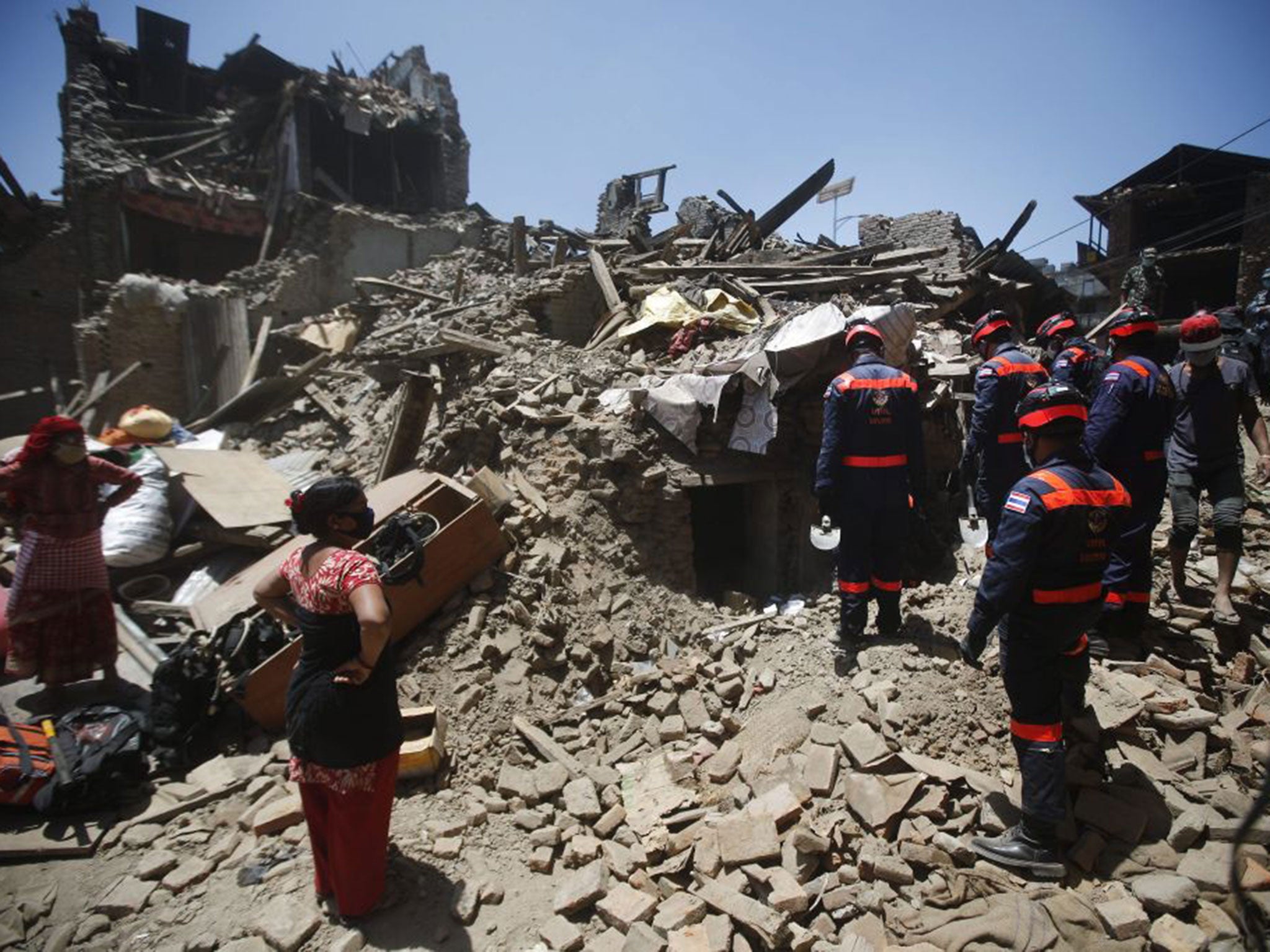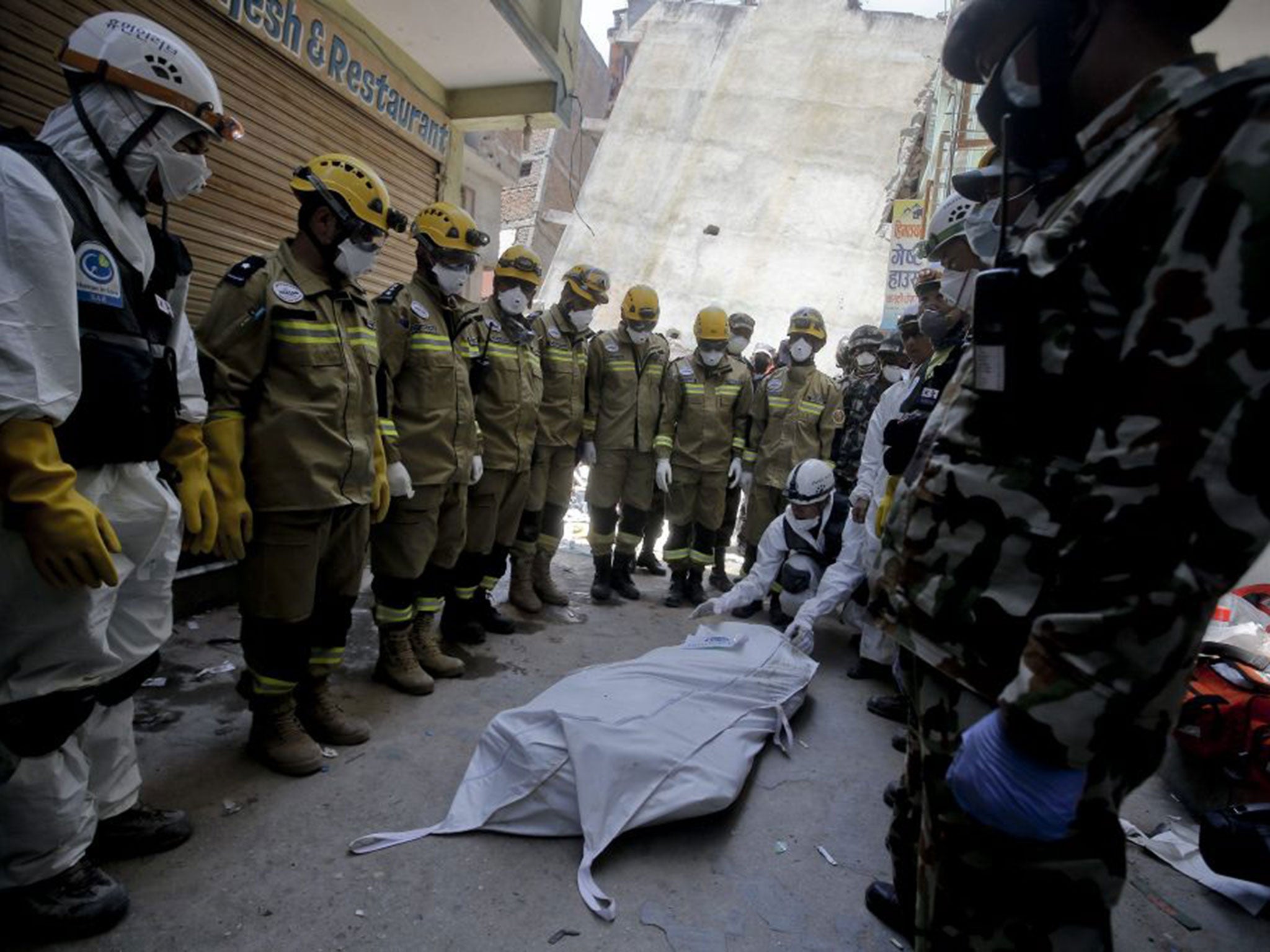Nepal earthquake: How the regional rivalry between China and India has spilled over into the international rescue effort
Some suspect the motives of the foreigners bringing humanitarian aid are not always entirely altruistic

Your support helps us to tell the story
From reproductive rights to climate change to Big Tech, The Independent is on the ground when the story is developing. Whether it's investigating the financials of Elon Musk's pro-Trump PAC or producing our latest documentary, 'The A Word', which shines a light on the American women fighting for reproductive rights, we know how important it is to parse out the facts from the messaging.
At such a critical moment in US history, we need reporters on the ground. Your donation allows us to keep sending journalists to speak to both sides of the story.
The Independent is trusted by Americans across the entire political spectrum. And unlike many other quality news outlets, we choose not to lock Americans out of our reporting and analysis with paywalls. We believe quality journalism should be available to everyone, paid for by those who can afford it.
Your support makes all the difference.The competition for influence between China and India has spilled over into rescue efforts in the Himalayan earthquake zone – but the teams say politics must be left to one side for now
There were the Chinese on Monday, the Turks on Tuesday, Indians on Wednesday and the Thais on Saturday. In between, there had been Tibetan monks and a group of Sikh social workers.
Nepal’s terrible earthquake killed more than a hundred people in Sankhu and damaged or destroyed 90 per cent of the town’s homes. But Sankhu’s shattered streets have also hosted a multinational humanitarian force, from countries and groups that are not so much in coalition as in competition on the international stage.
There is no doubting the need for help. Row after row of shattered and broken buildings line the streets in this town 20 miles from Kathmandu. Officials maintain that all the dead have been recovered from under the collapsed buildings; but residents deny that is the case. And there lingers in the air the sickly-sweet smell of decomposing bodies under the rubble.
Local people have watched the Chinese in red uniforms, the Turks in black, the Thais in royal blue and the Indians in olive combats, come and go. The monks in brown robes and the Sikhs from Delhi with their flowing beards have stayed on longer, the latter setting up a field kitchen and distributing daily meals.
“We don’t think we’ll see anyone for very long. But we are grateful they have taken the trouble to come from their homelands to help. Our concern is about our government,” said Harishar Shestra, whose home has been demolished. “All the aid is coming from foreign countries, from aid organisations. Our officials do the distribution, but it is bad; one family gets things, the ones next door nothing, there is no organisation, we would like the foreigners to do this, they would be better, more efficient.”
His neighbour, Manoj Kartick, suspected the motives of the foreigners were not entirely altruistic. “The Chinese and the Indians are big rivals and they are using this aid in their rivalry, spread their influence, which is good for us, of course,” he said.
“The Thais and the Chinese have some disputes, don’t they, in the seas? The Sikhs are Indians, but wasn’t there trouble between them and the government? The Chinese drove out the monks from Tibet. Now the Turks, I don’t know about them.”
The monks, whose humanitarian work is being organised by Dr Tsering Puntsok, who runs a free medical clinic, were from the Benchen monastery, a Buddhist temple complex in Kathmandu valley. The original Benchen monastery was in Tibet. It was destroyed by the Chinese army in 1959.
One of the monks said: “I am too young to remember, but yes, my father’s generation had trouble with the Communist government. It can still be difficult for religious people, of course – that is why the Dalai Lama is in exile, in India.” The Chinese emergency team did not want to get involved in controversial history. “We were ordered to come here to help the Nepalese, and that is what we are doing, it is not about politics,” said one rescue worker.
The Indian government had fought a bloody insurgent war in the past with Sikh separatists, severely damaging the Golden Temple in Amritsar, the holiest shrine in the Sikh religion, during the conflict. However, at the kitchen where local people line up for lunch and dinner, Kuldip Singh, from Delhi, one of the volunteers, insisted: “Yes, it happened, there was violence, but that’s all in the past, we’re here to help the Nepalese on behalf of fellow Indians.”

But the perception of rivalry between the two Asian giants over the Nepal earthquake is very much present. Chinese journalists have asked why their government did not deploy its large air force to evacuate 8,000 Chinese who were stranded for days, pointing out that the Indians had taken out not just their nationals, but from those of 15 other countries. Beijing’s decision to use civilian planes was also criticised amid reports that the airlines had demanded exorbitant prices.
Hong Lei, a foreign ministry spokesman in Beijing, said: “China and India are neighbours to Nepal. We would like to work together and co-ordinate positively with India our assistance efforts to help Nepal rebuild its homeland.”
The Indian media, meanwhile, reported that China has sent armed police for rescue operations in Nepal, pointing out that it was the first time that the force had ventured beyond its borders. It was described as a “significant move” which came at the request of the Nepalese government, with the implication that Beijing has won a round in the influence battle.
There was also endorsement for China from the head of the UN Development Programme in Nepal, the former New Zealand premier Helen Clark, who said after meeting officials in Beijing that China has been “a very good neighbour” in the crisis with its humanitarian mission.
Beijing has sent around 200 military personnel to Nepal. The US will have twice that many over the coming weeks. The Americans deny that they are late on the scene. Brigadier General Paul Kennedy said: “We don’t want to bull our way in just because we’re ready.” He said US forces would be on the spot “when they asked for us to come and they were ready to receive us”.
The US Marines will bring three Huey and 10 Osprey helicopters and a team which will grow to around 420.
“We are bringing in significant capacity,” General Kennedy said. The US team will include air force experts based on Guam who can control air traffic, repair airfields and offload supplies with heavy equipment.
Join our commenting forum
Join thought-provoking conversations, follow other Independent readers and see their replies
Comments